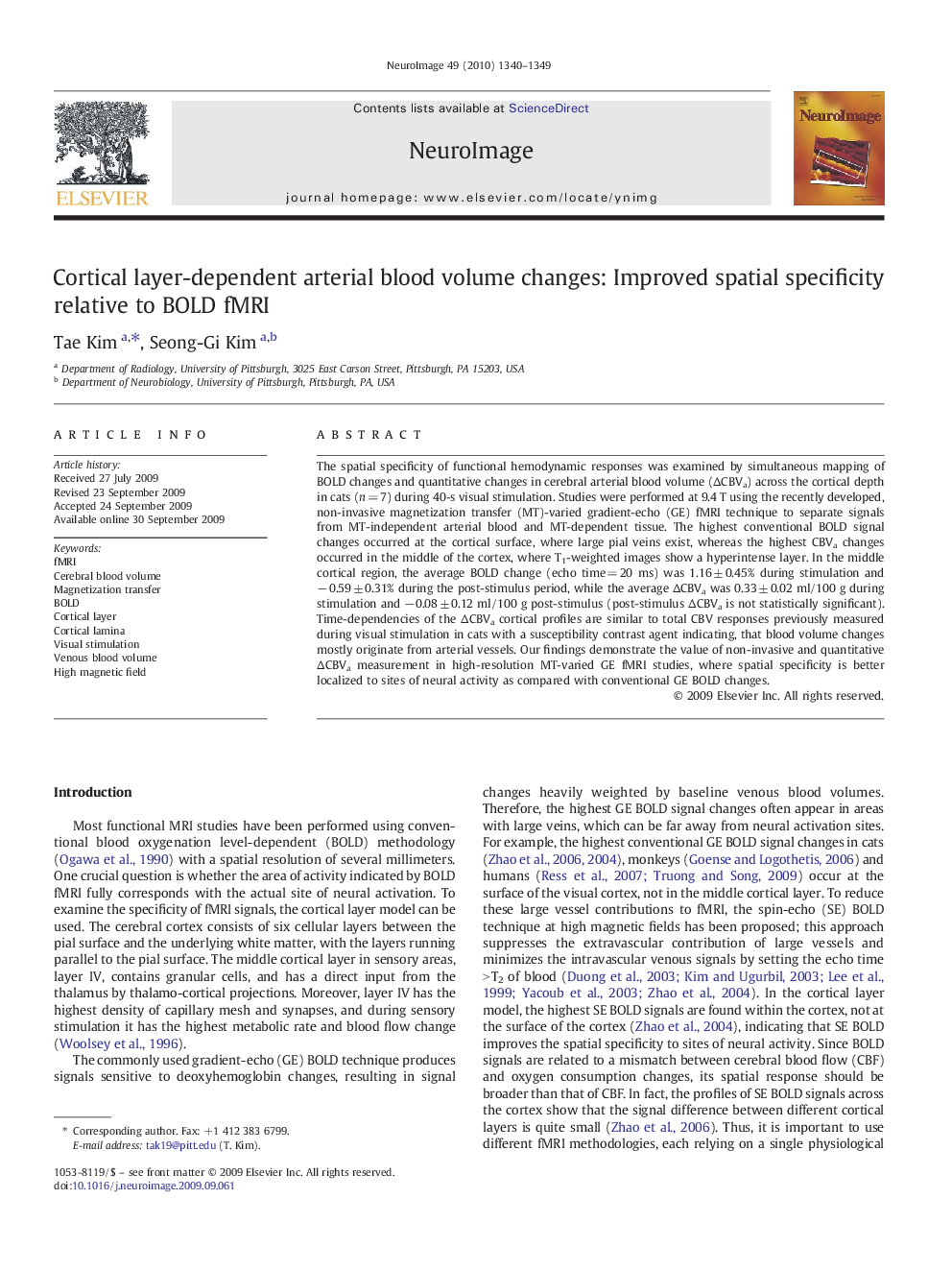| Article ID | Journal | Published Year | Pages | File Type |
|---|---|---|---|---|
| 6037943 | NeuroImage | 2010 | 10 Pages |
Abstract
The spatial specificity of functional hemodynamic responses was examined by simultaneous mapping of BOLD changes and quantitative changes in cerebral arterial blood volume (ÎCBVa) across the cortical depth in cats (n = 7) during 40-s visual stimulation. Studies were performed at 9.4 T using the recently developed, non-invasive magnetization transfer (MT)-varied gradient-echo (GE) fMRI technique to separate signals from MT-independent arterial blood and MT-dependent tissue. The highest conventional BOLD signal changes occurred at the cortical surface, where large pial veins exist, whereas the highest CBVa changes occurred in the middle of the cortex, where T1-weighted images show a hyperintense layer. In the middle cortical region, the average BOLD change (echo time = 20 ms) was 1.16 ± 0.45% during stimulation and â 0.59 ± 0.31% during the post-stimulus period, while the average ÎCBVa was 0.33 ± 0.02 ml/100 g during stimulation and â0.08 ± 0.12 ml/100 g post-stimulus (post-stimulus ÎCBVa is not statistically significant). Time-dependencies of the ÎCBVa cortical profiles are similar to total CBV responses previously measured during visual stimulation in cats with a susceptibility contrast agent indicating, that blood volume changes mostly originate from arterial vessels. Our findings demonstrate the value of non-invasive and quantitative ÎCBVa measurement in high-resolution MT-varied GE fMRI studies, where spatial specificity is better localized to sites of neural activity as compared with conventional GE BOLD changes.
Keywords
Related Topics
Life Sciences
Neuroscience
Cognitive Neuroscience
Authors
Tae Kim, Seong-Gi Kim,
